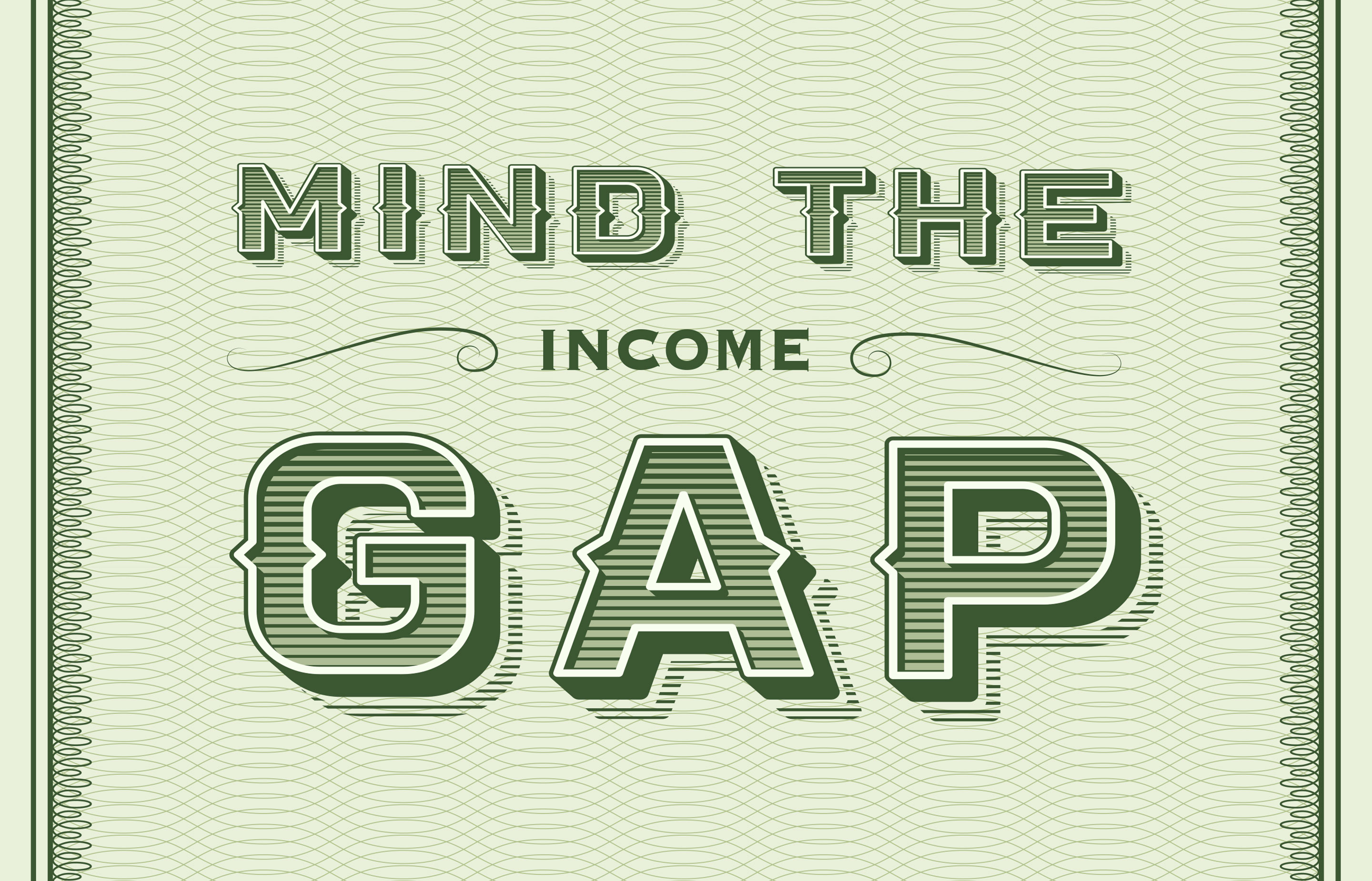Mind the Income Gap
Income inequality in the United States is at its greatest since the Gilded Age. Professor Mark Stelzner explains why.
Since joining Conn’s faculty in 2015, Associate Professor of Economics Mark Stelzner has taken an interdisciplinary approach to studying inequality and the political underpinnings of the U.S. economic system. Stelzner, who earned a Ph.D. from the University of Massachusetts Amherst, a hub for heterodox economics in the U.S., has conducted research on everything from the evolution of labor laws and antitrust administration to the connection between corporate market power and wage discrimination to the relationships between consumption, growth and happiness.
Recently, he sat down with CC Magazine Editor Amy Martin for a wide-ranging discussion about the history and current state of income disparity in the U.S.—and what, if anything, can be done about it.
CC Magazine: According to the Congressional Budget Office, income inequality between the richest Americans and, well, everyone else is at its greatest since the late 1920s—and growing. But there have been times when income was much more evenly distributed between the highest and lowest earners. What happened?
Mark Stelzner: The historic income inequality we associate with Gilded Age up to the Great Depression began to shrink in the 1930s and reached a low in the ’50s, ’60s and ’70s. A big reason for that is the central labor legislation that was passed in the Depression period. The National Labor Relations Act, which is the central piece for collective bargaining still, was passed in the mid-1930s. And then the Fair Labor Standards Act, which set a minimum wage, was passed just a few years later. Those laws empowered workers to respond to employers if they tried to exercise any type of market power to push down wages, and we see a dramatic increase in unionization and in strikes.
Then there were the tax laws. The top marginal tax rate in the United States in mid-century was around 93%, which essentially acted as a wage ceiling. Basically, any income in that top marginal tax bracket would almost all be taxed away. So if you’re a CEO and you’re making just under that tax bracket, you have no incentive to increase your wage.
CC: So, what changed?
MS: A lot. In the 1980s, we start to see a change in social attitudes around unions. For example, some things were always legal, but they weren’t commonly done, like firing striking workers. But in the 1980s, you have Reagan firing all the striking air traffic controllers, which made the private sector realize, “Oh, hey, we can do this too.”
And then in this same period, we see changes in the interpretation of antitrust laws, which impact the ability of firms to buy up competition. These laws were most intensely enforced in the mid-20th century, from World War II through the early 1970s. But since then, we’ve basically deregulated antitrust law, not through Congress, but through the reinterpretation of the laws already on the books via regulatory bodies. Conversely, we’ve more intensely regulated patent laws and extended the duration of patents, which gives more power to the patent holder and increases the amount of profit they can pull from it.
Essentially, by increasing consolidation and decreasing worker power, employers have more leverage to push wages down.
